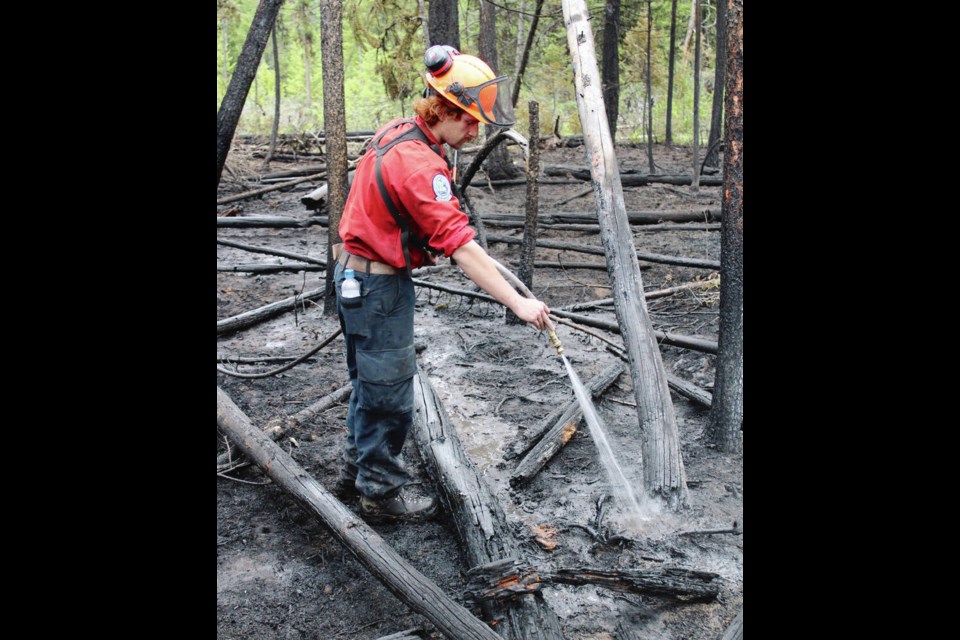While climate leaders, activists and industry stakeholders from around the world were meeting in Egypt for COP 2022 to discuss current status and ways forward, many others have been contemplating the effects of climate change on their lives and livelihoods.
Five people died in last year’s floods, which the Insurance Bureau of Canada ranks as B.C.’s costliest weather event, with insured losses of $675 million. Homes and livestock were lost, and farms and businesses damaged.
A Pacific Climate Impacts Consortium study published earlier this year showed how human-induced climate change had increased the probability of the atmospheric river that dumped those record amounts of rain in the region by as much as 50 per cent.
If we work backwards from that event, we can link the entire series of B.C. weather-related events to the changing climate’s influences.
Wildfires burned 870,000 hectares in B.C. in 2021. They torched the village of Lytton and thousands of other properties elsewhere, and disrupted many lives across the province’s interior.
The fires set the provincial government back $565 million in firefighting costs. Insurance costs reached $77 million in White Rock Lake and $78 million in Lytton, alone.
More critically, the fires laid the groundwork for the level of devastation that occurred later, in November’s floods and landslides. They disrupted forests’ and the landscape’s ability to absorb water, increasing runoff over the surface, washing dead wood and sediment into creeks and then downstream, and destabilizing banks and slopes.
One further step backwards in time brings us to the heat dome.
Average or above-average amounts of snow had fallen across much of B.C. over the winter of 2020-2021. Spring was cool and fairly damp.
Then, in late June, the heat dome arrived, stretching as far as Manitoba, the Northwest Territories, Idaho, western Nevada and central California.
More than 600 people died as a result of the heat in B.C. Another 300 or so heat-dome deaths are confirmed in the U.S.
Although no insurance or government estimates of the financial costs of heat-dome damages in Canada, estimates for the U.S. are about $9 billion US.
An analysis by an international team of climate scientists later concluded that the occurrence of a heatwave with the temperatures recorded in the region would have been virtually impossible without human-caused climate change. In other words, climate change made the heat dome’s magnitude 150 times more likely.
That heat set the conditions for the wildfires that exploded soon after.
Last year, one climate change-driven weather event led to another, contributing to the next disaster and worsening it. And climate powered the sequence.
We can add up the ambulance calls and emergency room visits, calculate the evacuation notices and orders, tally the number of buildings burned and hectares flooded, and consider the kilometres of roads closed or washed away. But the further we move from concrete and direct impacts, the trickier the accounting of the costs of such events on lives and livelihoods becomes.
When we estimate the costs of last year’s weather disasters, do we, for example, include all the community flood mapping costs and mitigation efforts that will be incurred going forward?
Some of those initiatives were identified years ago — the floods merely underscored the urgency. Do we count the costs to repair and climate-proof the Lower Mainland’s dyking systems? That infrastructure has been in need of attention for decades, and work on it should have begun years ago.
Do we calculate the ever-increasing climate-driven insurance costs for our homes and businesses that all of us will be paying for years to come?
Do we include the contributions by climate-disrupted supply lines to this year’s inflation rates that have increased the costs of food, fuel and other goods?
Do we consider the downstream social costs that society will be paying as a result of families, for example, having to choose between paying rent or buying food?
Do we include the costs of long-term damage to coastal, marine, forest and wetland ecosystems and their effects on fisheries, pollinators, natural flood protection, and so on? And what about the many potential ways in which those now-disrupted systems may contribute to future climate-fuelled disasters?
A message repeated often at COP27 this month was that climate change is happening here and now, and that we’re already experiencing its effects on our lives and livelihoods.
The costs, however — we’ll all be paying those for decades to come.



